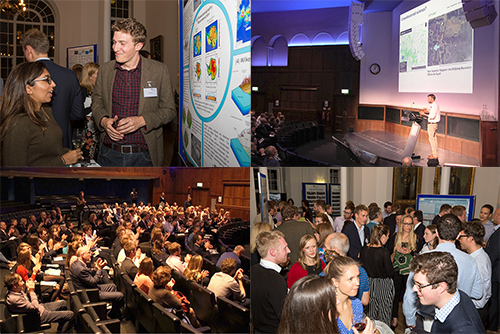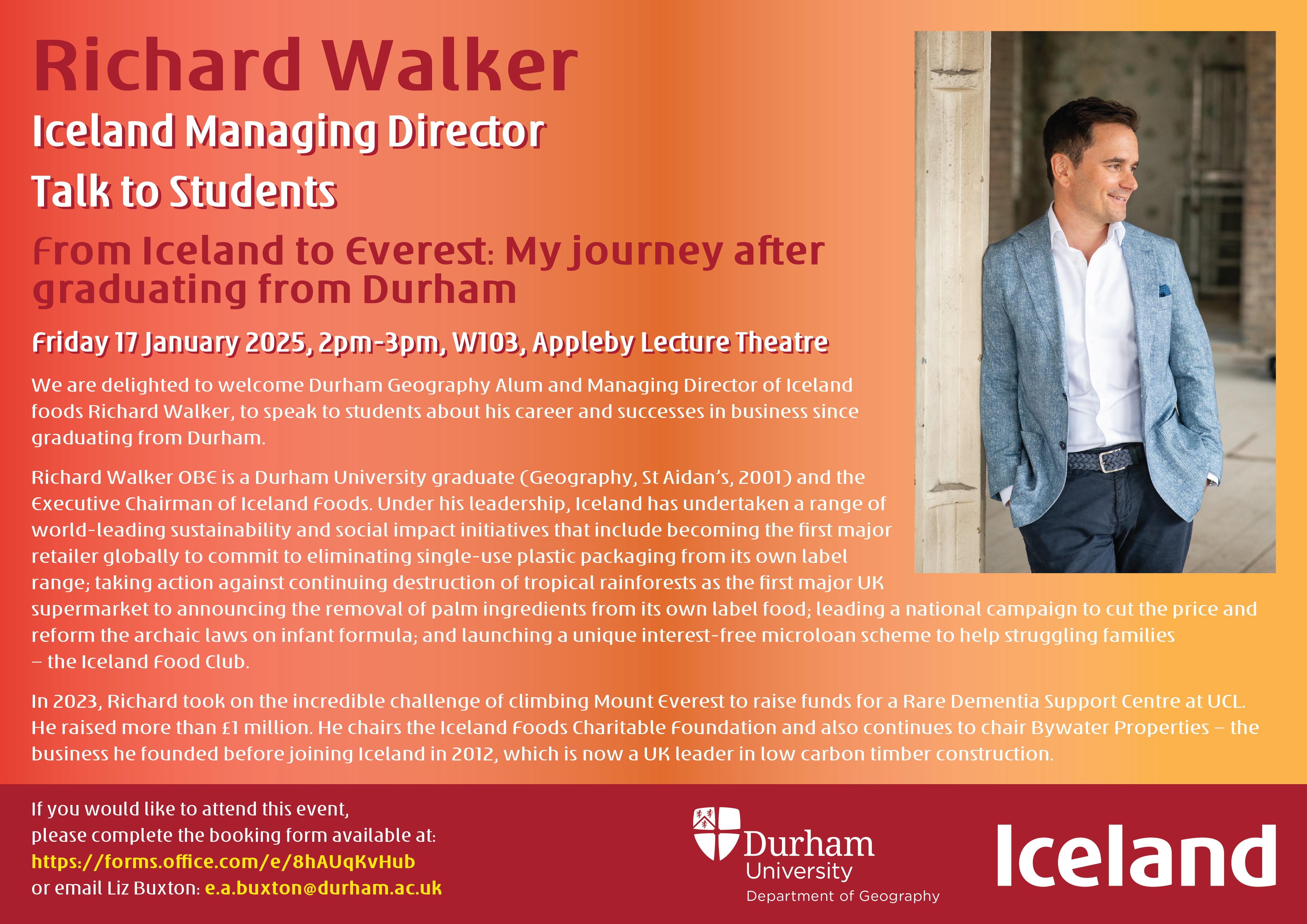Alumni Lecture Series

The Department of Geography often arranges lectures from current members of staff, showcasing some of the exciting research that is happening within the department. The talks will last approximately 1 hour, with time for questions and discussion. They will also be recorded, so if you can’t make the live event, you can catch up at your leisure. We will share details here of forthcoming lectures and you can find links below to presentations given in the past.
We look forward to seeing you!
Events in the 2024/25 academic year:
Durham Geography Alumnus and Managing Director of Iceland foods, Richard Walker, will speak about his career on Friday 17 January 2025, 2pm-3pm, W103, Appleby Lecture Theatre:

Tuesday November 26th 2024 (alumni careers talks for geographers):

Past Alumni Lectures
Our online alumni lectures have been recorded and are available to view on YouTube.


/prod01/prodbucket01/media/durham-university/departments-/geography/Matt_Couchmann-3872X1296.JPG)
/prod01/prodbucket01/media/durham-university/departments-/geography/alumni/Noam-Lesham.jpg)
/prod01/prodbucket01/media/durham-university/departments-/geography/alumni/Erin_NZ.png)
/prod01/prodbucket01/media/durham-university/departments-/geography/alumni/Simon-4-90X118.jpg)